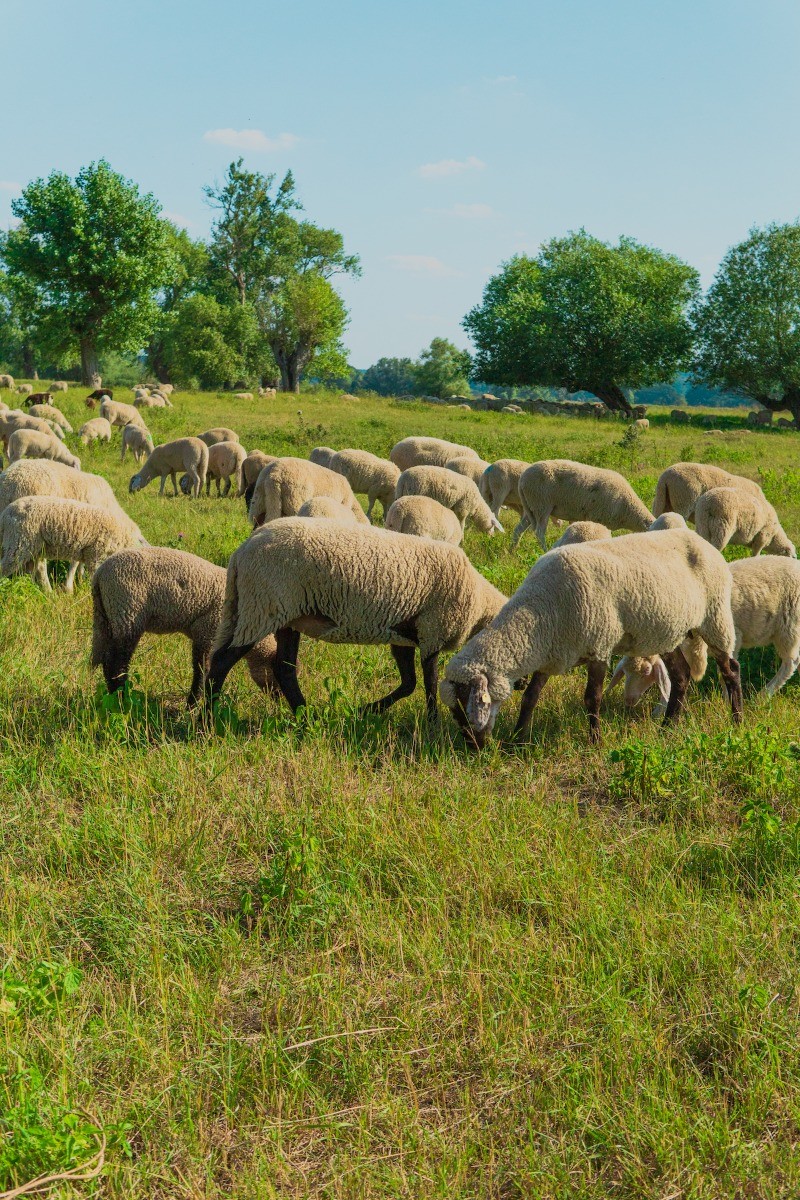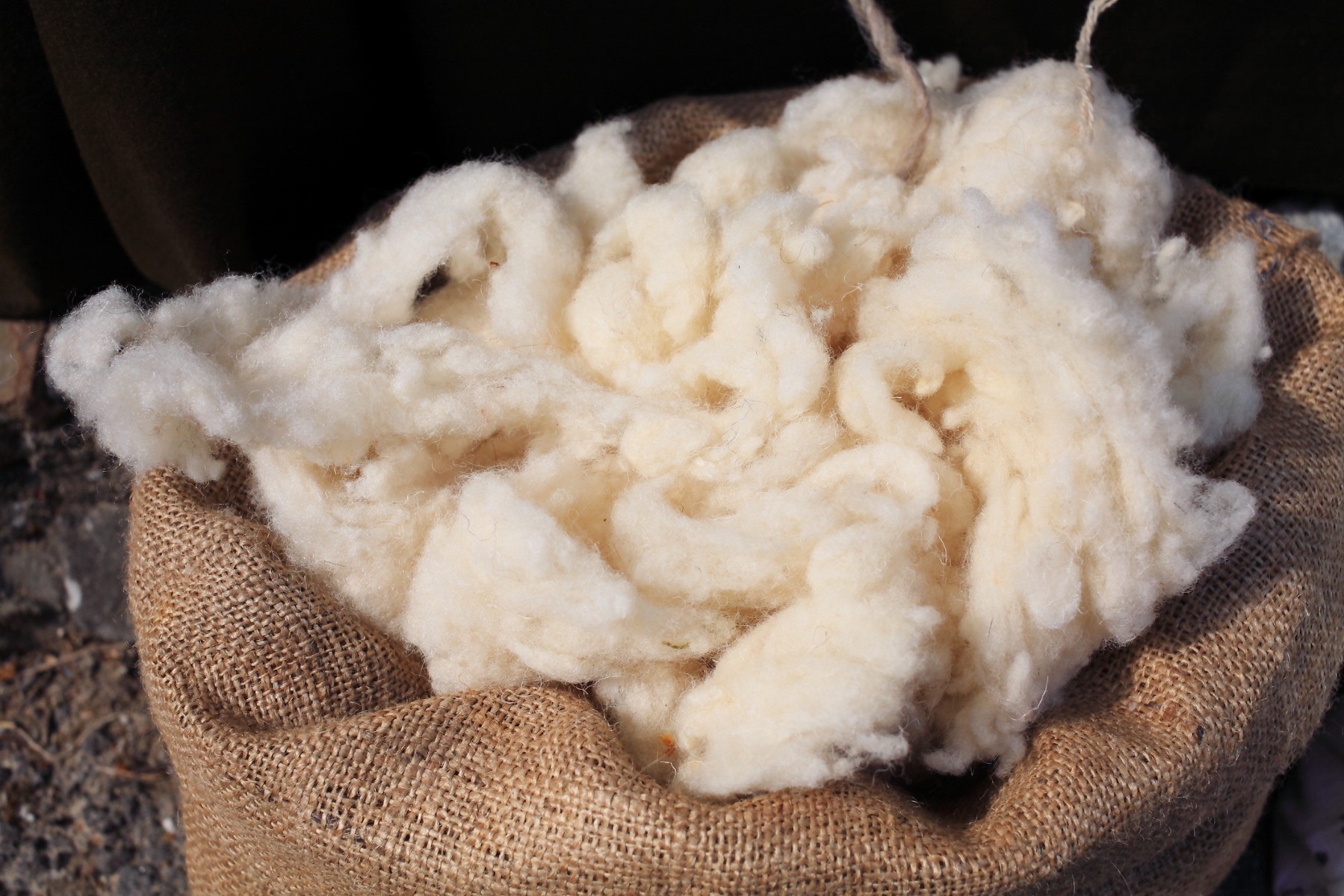
Wool is one of the oldest and most versatile fibres known to mankind. It has been used for thousands of years for clothing, blankets and other textile applications. But at a time when sustainability is becoming increasingly important, many people are asking themselves whether wool is an environmentally friendly material. In this blog post, we take a look at the sustainability of wool while exploring the fascinating history of this textile fibre.
The history of wool:
The use of wool as a textile material dates back to ancient times. Thousands of years ago, people recognised the natural properties of wool and used it for their clothing. Sheep breeding became an important economic activity and the production of woollen fabrics developed into a craft of great importance. Over time, wool became an important commodity and drove the development of industries and trade networks.
During the Middle Ages, the wool industry boomed in Europe, especially in countries such as England and Flanders. The growing demand for high-quality woollen fabrics led to the development of spinning wheels and looms, which made production more efficient. Wool craftsmen and traders organised themselves into guilds to set quality standards and control trade.
With industrialisation in the 18th and 19th centuries, wool production began another transformation. The introduction of mechanical spinning machines and looms revolutionised the textile industry and made mass production of wool possible. At the same time, however, the use of chemicals and the exploitation of workers led to social and ecological challenges.
Wool from the Gerrman Wendland
The Wendland, an idyllic region in the north-east of Lower Saxony in Germany, is known for its picturesque landscape of rolling hills, extensive dikes and abundant wildlife. Amidst this natural beauty, sheep play a special role. In this blog post, we would like to look at the wool from the Wendland and the sheep that graze on the dykes. Learn more about the sustainable fibre and the importance of sheep farming for this unique region.
Sheep farming in the Wendland:
The Wendland offers ideal conditions for sheep farming. The extensive dikes and meadows offer the sheep enough space to graze and pasture. The sheep are lovingly cared for and managed by the farmers of the Wendland. Through their natural grazing, the sheep make an important contribution to maintaining biodiversity and caring for the landscape. They help to keep the dikes stable and thus contribute to flood protection.
The wool of the Wendland sheep:
The sheep in the Wendland often belong to old, regional breeds such as the Heidschnucken sheep or the Moorschnucken sheep. These breeds have adapted to the climatic conditions of the region over centuries and provide high-quality wool. The wool of the Wendland sheep is known for its robustness and resilience.
Sustainability of Wendland wool:
Wool from the Wendland stands out for its sustainability. What makes our elbwolle™ sustainable?

Our elbwolle™
To produce our elbwolle™, the wool is collected from shepherds in the region and processed in cooperation with regional partners. We attach great importance to short production routes and prefer to market the wool in regional contexts. The aim is to give value back to the local raw material wool and to utilise it locally in a way that adds value. At the same time, the aim is to expand cooperation with local craftsmen and thus bring more steps of the production chain into the region.
The motivation for this project arose when it was realised that there was no regional processing possibility for the wool from their own small flock of sheep. In addition, the sale of wool from large flocks often did not even generate enough revenue to cover the shearing costs, which meant that a large part of this valuable raw material was wasted. It was then decided to collect wool from small and large sheep farms and then have it washed, combed and spun. Care was taken to find wool laundries that were as regional as possible, and partners were eventually found in Poland and Belgium. However, all further processing steps take place in Germany.
By using regional resources and developing product ideas for a sustainable lifestyle, a contribution is made to sustainability. Sheep also contribute to the maintenance of the cultural landscape. Emissions can be saved through short transport routes. Wool is a natural and compostable raw material that can eventually be used as a long-term fertiliser. These activities not only take economic and regional aspects into account, but also contribute to environmental protection.
Properties of wool:

Water repellent:
The outer layer of the wool fibre is hydrophobic and allows water drops to roll off. At the same time, water vapour can get inside the fibre.
Not wet:
Wool can absorb up to 30% of its own weight in water without feeling wet. The water is stored in the spaces between the fibres, which keeps wool dry even when damp.
Slow drying:
Because of the water storage in the fibre, wet wool dries slowly. It is important to handle wet wool carefully to prevent it from wearing out.
Dirt repellent:
The structure of the wool fibre allows it to repel dirt and shake it off as the fabric moves.
Odour-repellent/self-cleaning:
The chemical composition of the wool fibre reacts to bad odours and eliminates them. Clothing made of wool retains its freshness for a long time.
Temperature balancing:
The air-filled spaces in the wool fibre provide a good insulating effect and help to balance the body temperature.
Elastic:
Wool can be stretched by up to 30% without tearing. It then returns to its original shape, keeping wool wrinkle-free and supple.
Felting:
Under the influence of water, heat, movement and lye, wool can felt. The scale-like structure of the fibre becomes entangled and hydrogen bonds form between the fibres.
Flame retardant:
Wool burns badly and chars instead of melting. This makes it safer around sparks or flames compared to synthetic fibres.
These properties make wool a versatile and durable material that is valued in various applications such as clothing, carpets and upholstery.
Textile Science Wool:
The natural fibre sheep's wool is used in a wide range of applications. Due to its unique properties and sustainable production, it enjoys great popularity in various sectors.
In the clothing industry, sheep's wool is valued for its temperature-equalising properties. The air-filled spaces in the fibres enable a good insulating effect and ensure that the body temperature is regulated. Wool keeps you warm in winter and cools you down in summer. In addition, wool is elastic and crease-resistant, which makes it ideal for high-quality knitwear, jumpers, scarves and hats.
Wool is also popular in home textiles. Due to its dirt-repellent properties, the fibre literally "shakes off" dirt, making it ideal for carpets and rugs. Wool is durable, hard-wearing and retains its shape over time.
In addition, sheep's wool is also used for bedding and mattresses. Due to its natural moisture regulation, wool can absorb up to 30% of its own weight in moisture without feeling wet. This ensures a dry and comfortable sleeping climate.
Sheep's wool is also used in felt making. Through the use of water, heat, movement and lye, the fibres can felt and form a firm structure. Felt is suitable for making hats, bags, slippers and other handmade products.
In addition to textile applications, sheep's wool also has ecological advantages. It is biodegradable because it is made of natural proteins. It also has a low fire hazard and chars instead of melting.
Using sheep's wool as a sustainable raw material is a good choice for environmentally conscious consumers. It offers a wealth of possible applications in various industries and is known for its versatile properties and high quality.





